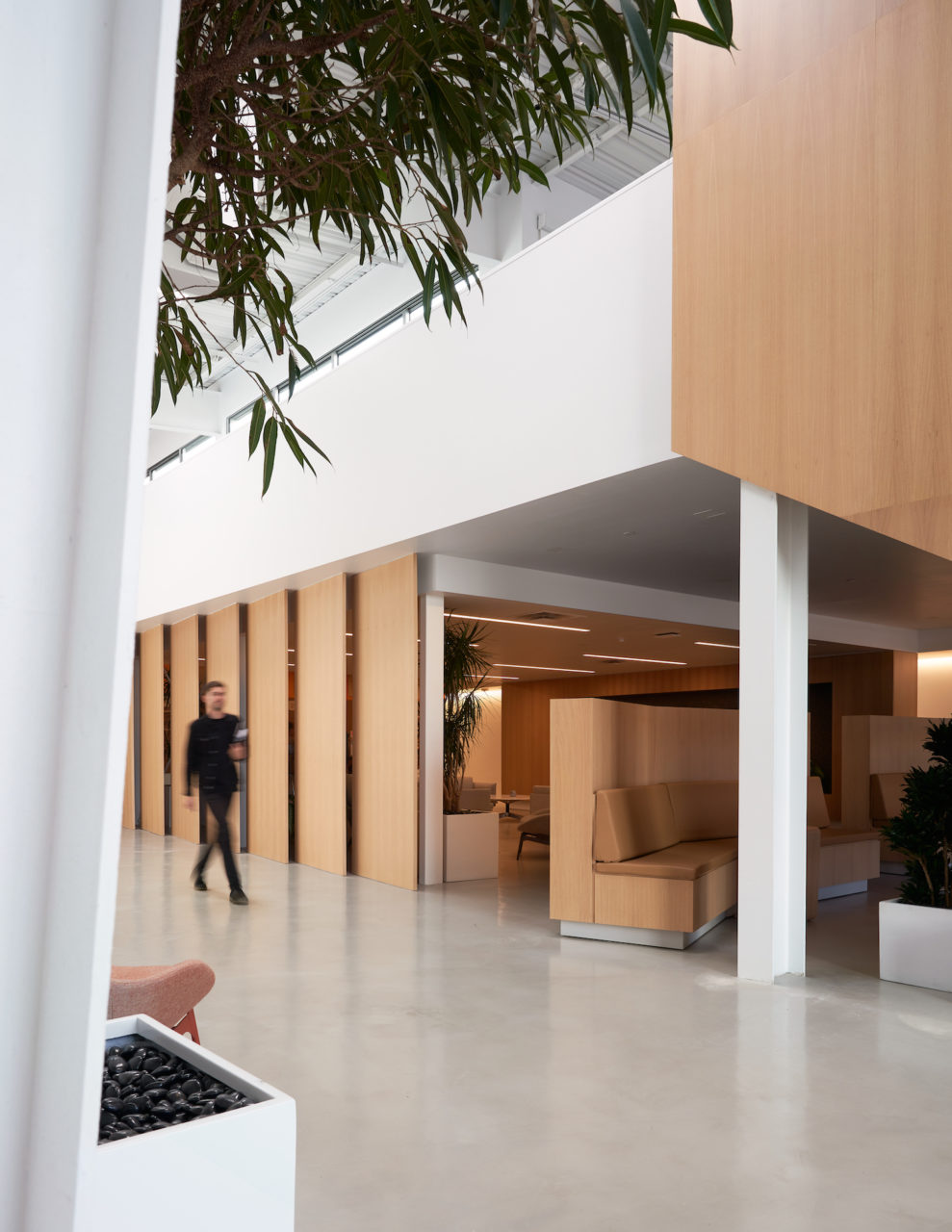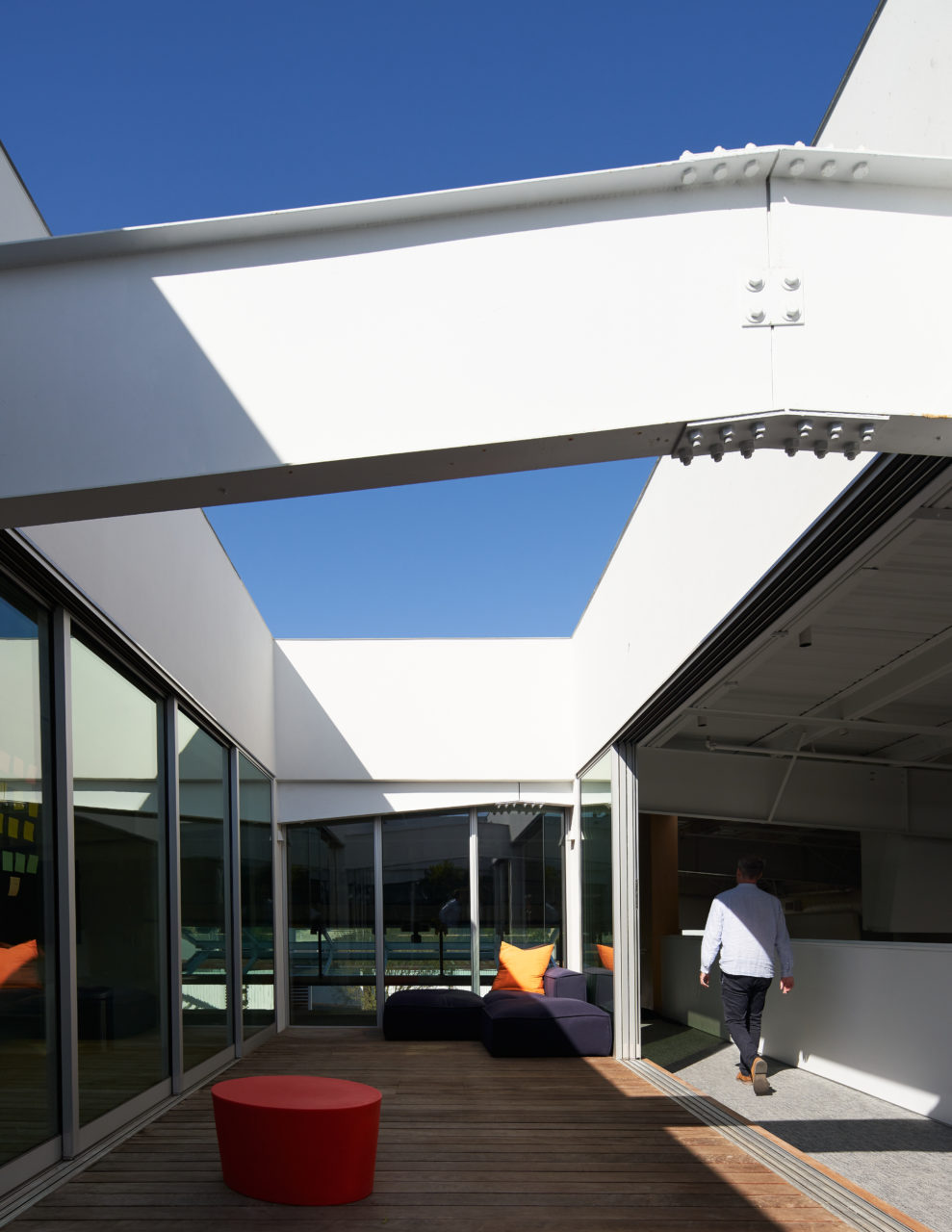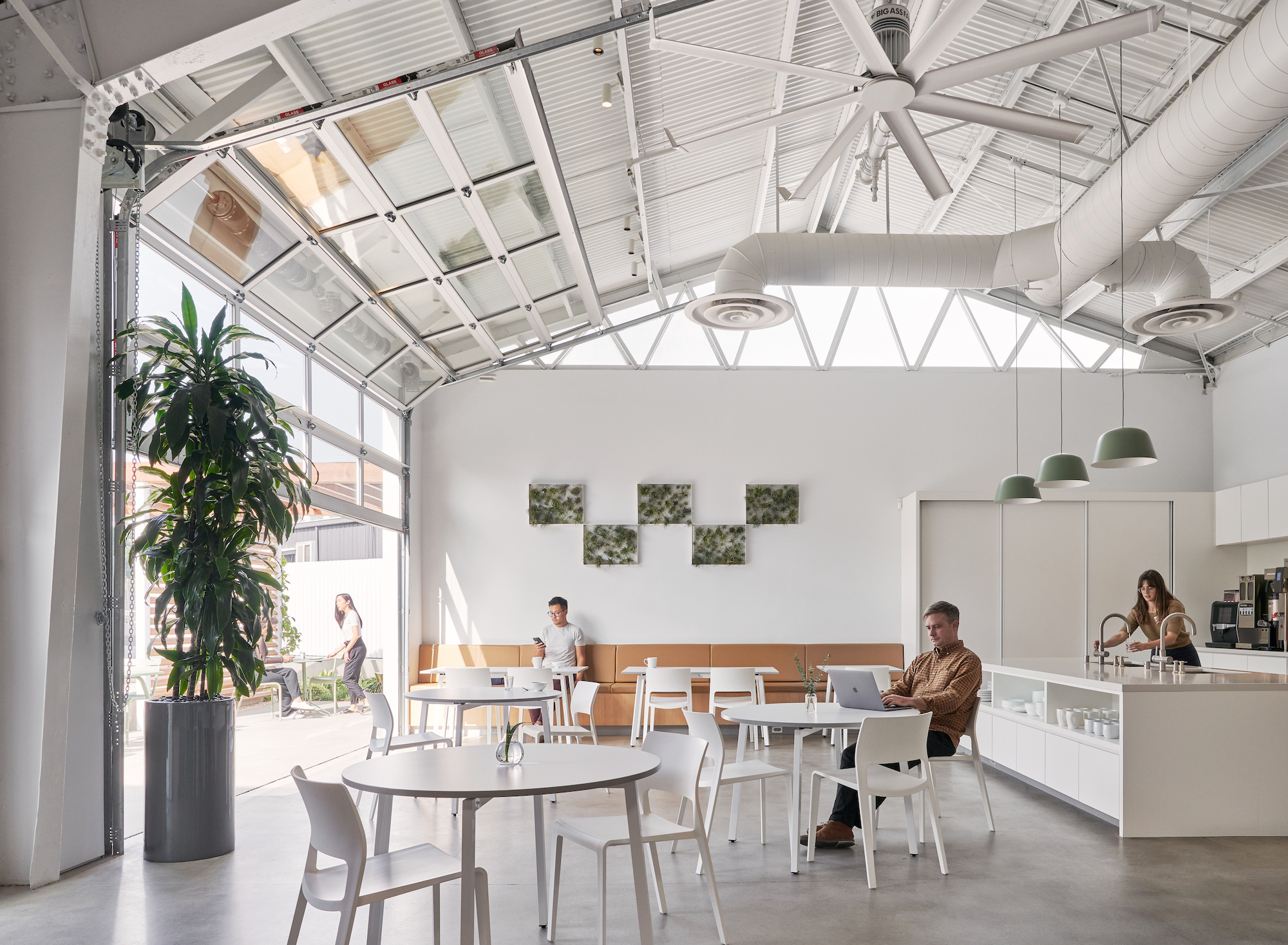Silicon Beach is a loose term for postindustrial pockets on the western edge of Los Angeles, an area filled with over 500 tech startups. Here reside many one-to-two-story warehouses shrouded in corrugated metal—part of the local vernacular. One challenge for designing a new office space in this post-factory district is how to connect inward-looking interiors with outdoor spaces seamlessly. Montalba Architects’ design for the meditation app Headspace does just that with a former parking lot–cum–meditation courtyard that connects to surrounding spaces in Santa Monica, California’s Bergamot Station arts complex.
After acquiring buildings around its original Bergamot Station office, the health-conscious tech company teamed up with Montalba Architects principal David Montalba to design flexible work environments and areas for meditation in the new structures and the outdoor spaces between them. “We expanded the campus to connect the indoor and outdoor spaces and bring natural light into each building,” Montalba said about the project, which finished last year.



To mesh with the wellness culture of Headspace, connection to the outdoors was crucial to foster health and encourage meditation. In addition to overhauling former parking spaces into a large courtyard and outdoor garden, the architects cleared part of the indoor space’s second floor to make way for a “sky room” terrace that’s connected by a lightwell and staircase to the courtyard.
The entry stair, which also functions as stadium seating and is a flexible workspace, rises in front of a bifold glass door that opens onto the courtyard. When the door is close, the stair-seating space turns into a formal area for company-wide meditation, presentations, and meetings. If need be, a media screen can roll down in front of the hangar door.

The architects used a neutral material palette inspired by art galleries. The walls are treated in light tones: white paint, cork, and felt (for acoustic purposes). This continues throughout, creating continuity between a variety of spaces: flexible workstations, a group meditation area, lounge spaces for collective brainstorming and extracurricular office gatherings, private phone booths, collaborative meeting rooms, and a large kitchen. Freestanding rammed earth meditation rooms are interspersed throughout the campus for employees to get a moment of silence.
For a tech company with the slogan, “Meditation and Sleep Made Simple,” it was pivotal that the office’s design “reflect the company’s core values of mindfulness, focus, and dedicated purpose.” Now, as a unified network of flexible workspaces and outdoor areas, the office is where employees can work in a better headspace.
Header image: The cafe is located at the center of the campus and provides a large area for daily team meals. Just off the courtyard, a monolithic glass garage door opens for ventilation and accessibility. (Kevin Scott)
